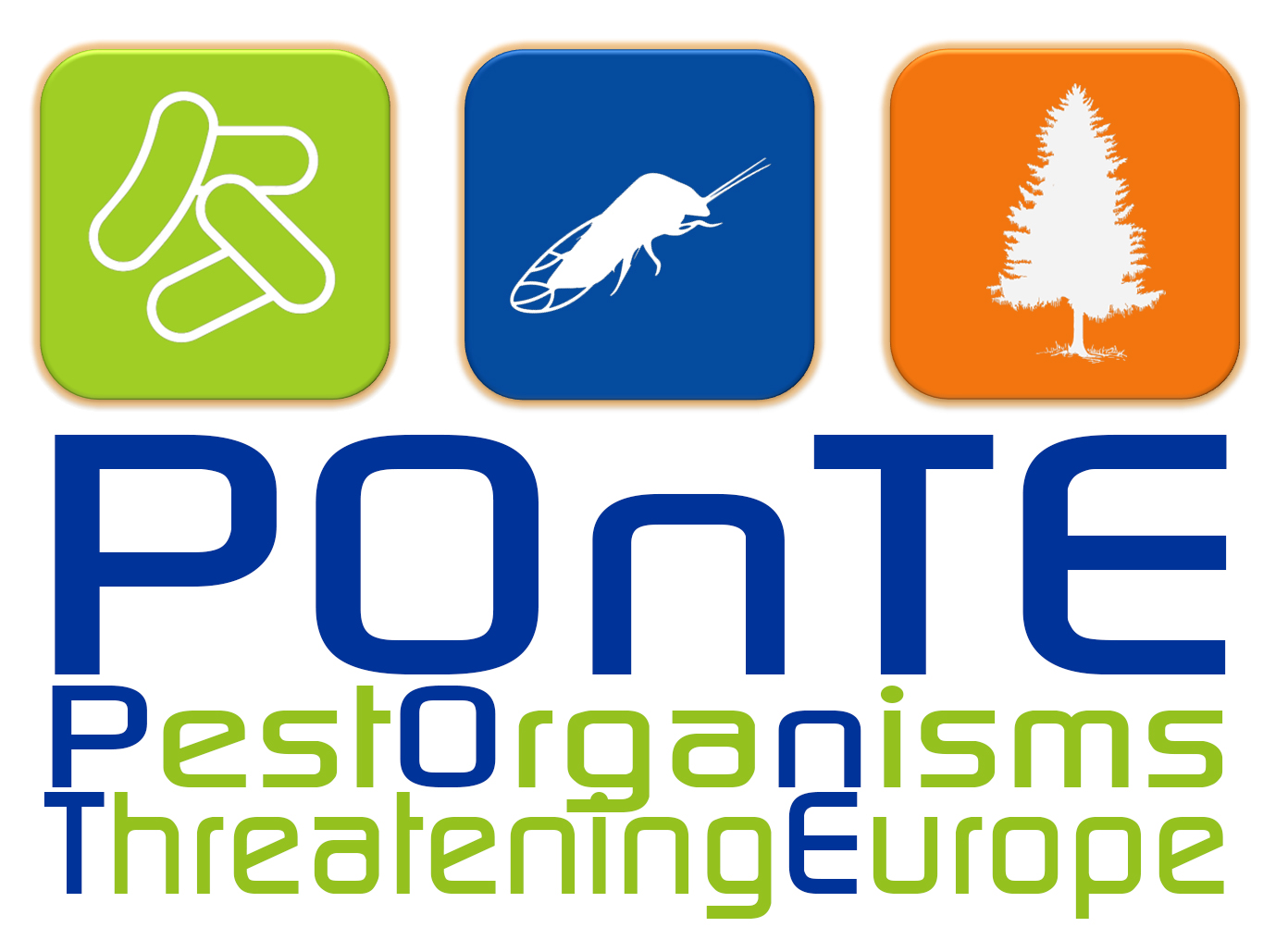POnTE experimental plot: search of sources of resistance to Xylella fastidiosa in the olive germplasm (WP7)
[GTranslate] Google Translate
An experimental olive plot with almost twenty different olive cultivars (24 replicates for each cultivar) has been set last week in the Xylella-infected area of the province of Lecce (Apulia, southern Italy). The 2-years old plants will be exposed to the natural infective vectors throughout the entire project duration. This plot extends the experimental field established in 2015 within a specific EFSA pilot project and including 10 different olive cultivars, whose evaluations will be followed and continued through the project POnTE.
The objective of this experimental trial is to explore, under the same growing conditions, the differential olive cultivar response to Xylella fastidiosa infections, in the attempt to identify tolerant/resistant genotype(s). Twenty-four trees for each cultivar have been planted in randomized blocks with 6 repetitions each. Experiments will continue by caging, during the month of July 2016, half of the plants with naturally infective Philaenus spumarius. Plants will be inspected and scored for symptoms, sampled for quantitative detection assays (qPCR) and for differential gene expression analyses.
The experimental plot has been located in an area surrounded by olive groves with high incidence of X. fastidiosa infections and olive quick decline disease. Indeed, there is the possibility to further increase the surface of this experimental field for evaluating an higher number of olive cultivars. To this end, an agreement with IFAPA (Instituto de Investigación y Formación Agraria y Pesquera) (Cordoba, Spain), one of the Institutions that maintain and preserve one of the larger international olive germplasm collection, has been already established for the evaluation of valuable olive germplasm, if further research projects will be funded .
Due to the lack of effective tools for combating this bacterium within the host plants, the use of resistant/tolerant germplasm would represent the most effective and sustainable solution for the long-term management strategy of the Xylella-associated disease(s) in the infected areas. Such finding would greatly impact the future cultivation of olives in the current infected area of the Apulia region, where olive is severely damaged by the occurrence of X. fastidiosa infections.
List of the cultivars (for table and oil) under evaluation in the project POnTE
Planted in 2015*
ARBEQUINA
ARBOSANA
CELLINA DI NARDÒ**
CIMA DI MELFI
CORATINA
DON CARLO®
FRANTOIO
FS 17®
KORONEIKI
LECCINO**
Planted in 2016
ASCOLANA TENERA
BELLA DI SPAGNA
CELLINA DI NARDO’
CIPRESSINO
DOLCE DI CASSANO
ITRANA
LECCINO
MAIATICA
NOCELLARA ETNEA
NOCELLARA MESSINESE
NOCIARA
OGLIAROLA
OLIASTRO
PENDOLINO
PERANZANA
PICHOLINE
SIMONE
TERMITE DI BITETTO
TOSCANINA
* The plot was realized in the framework of the ESFA “Pilot project on Xylella fastidiosa to reduce risk assessment uncertainties”, surveys and experiments on these plants will be continued within POnTE.
** Reference cultivars based on the investigations so far carried out. Cellina di Nardo’ is highly susceptible, Leccino is putative tolerant.

Experimental plot set by the CNR-IPSP in collaboration with the CRSFA, ACLI RACALE and APROL Lecce








